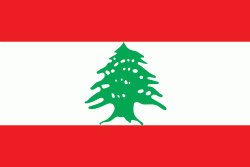Bsharri District (Caza de Bécharré)
Bsharri District is one of the 7 districts (qadaa, قضاء) of the North Governorate, Lebanon.
Surrounded by mountains, the Bsharri District sits on cliffs. The district is bordered by the Zgharta and Miniyeh-Danniyeh Districts to the north, the Koura District to the west, the Baalbek District to the east, and the Batroun District to the south. This district is a grouping of 26 villages and most are at an elevation higher than 1,000 meters. It also contains one of the most important landmarks of Eastern Christianity and Maronite history, the major part of the Kadisha Valley, the Qannoubin Valley where Hermits have resided since around the year 600 C.E., the last being Father Antonios Tarabay (fr) whose file in the Vatican is progressing toward beatification. He lived most of his life in the ancient monastery of Saint Elisha located in a grotto deep in the Qannoubin Valley. In this valley, there are more than 26 monasteries all more than 1,000 years old. At the top of this valley sits the legendary cedar forest, the Cedars of God.
Surrounded by mountains, the Bsharri District sits on cliffs. The district is bordered by the Zgharta and Miniyeh-Danniyeh Districts to the north, the Koura District to the west, the Baalbek District to the east, and the Batroun District to the south. This district is a grouping of 26 villages and most are at an elevation higher than 1,000 meters. It also contains one of the most important landmarks of Eastern Christianity and Maronite history, the major part of the Kadisha Valley, the Qannoubin Valley where Hermits have resided since around the year 600 C.E., the last being Father Antonios Tarabay (fr) whose file in the Vatican is progressing toward beatification. He lived most of his life in the ancient monastery of Saint Elisha located in a grotto deep in the Qannoubin Valley. In this valley, there are more than 26 monasteries all more than 1,000 years old. At the top of this valley sits the legendary cedar forest, the Cedars of God.
Map - Bsharri District (Caza de Bécharré)
Map
Country - Lebanon
 |
 |
| Flag of Lebanon | |
The earliest evidence of civilization in Lebanon dates back to 5,000 BCE. From c. 3200–539 BC, it was home to the flourishing Phoenician civilization before being annexed by various Near Eastern empires. In 64 BC, the Roman Empire conquered the region, and the region became a major center for Christianity under the Byzantine Empire. In the 7th century, the Muslim conquest of the Levant established caliphal rule. The 11th century saw the start of the Crusades and the establishment of Crusader States in the region only for it to be later reclaimed by the Ayyubids and Mamluks before being ceded to the Ottoman Empire in the 16th century. Under Sultan Abdulmejid I, the first Lebanese protostate took form in the 19th century as the Mount Lebanon Mutasarrifate, created as a home for the Maronite Christians under the Tanzimat reforms.
Currency / Language
| ISO | Currency | Symbol | Significant figures |
|---|---|---|---|
| LBP | Lebanese pound | لل | 2 |
| ISO | Language |
|---|---|
| AR | Arabic language |
| HY | Armenian language |
| EN | English language |
| FR | French language |















